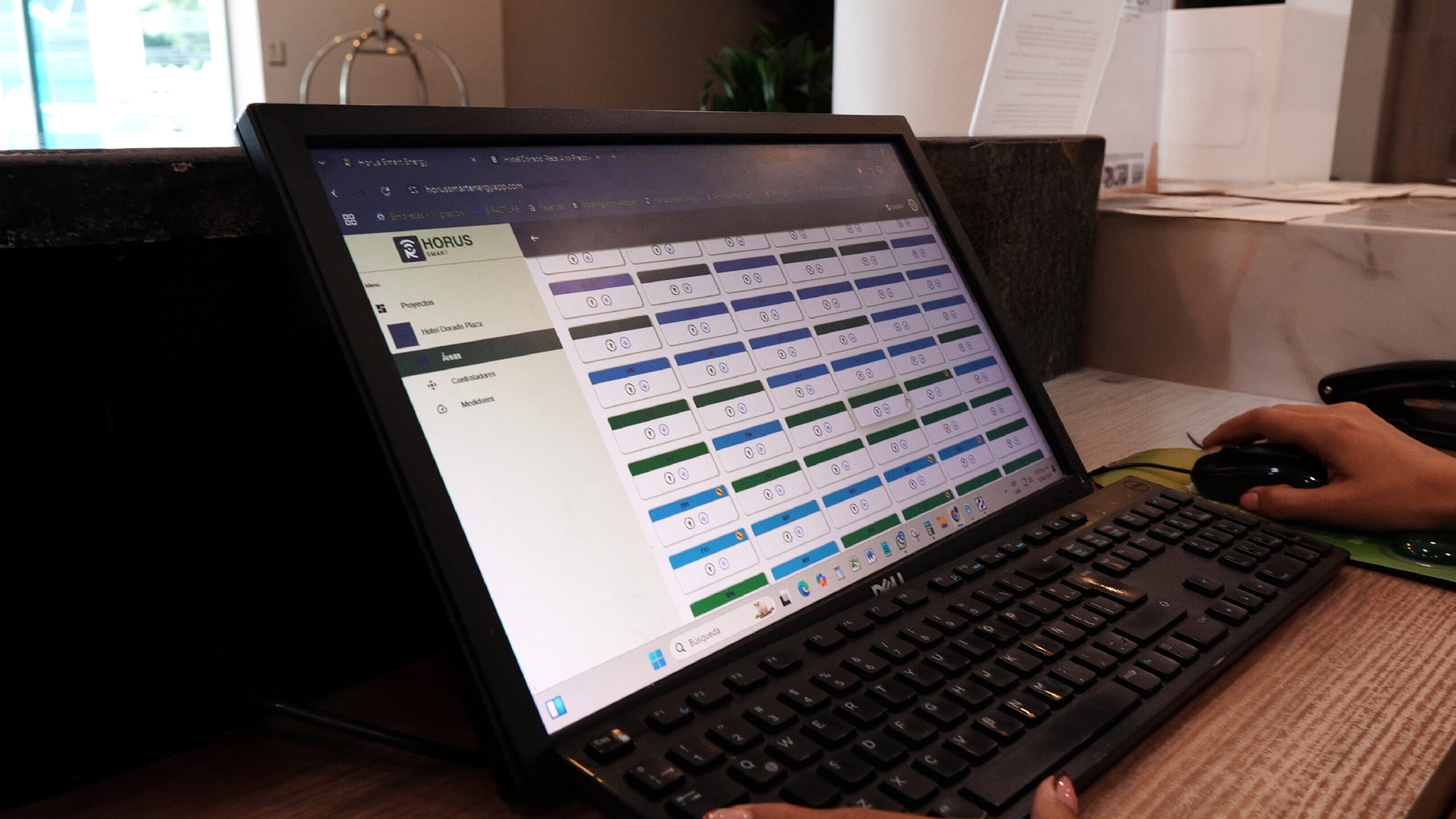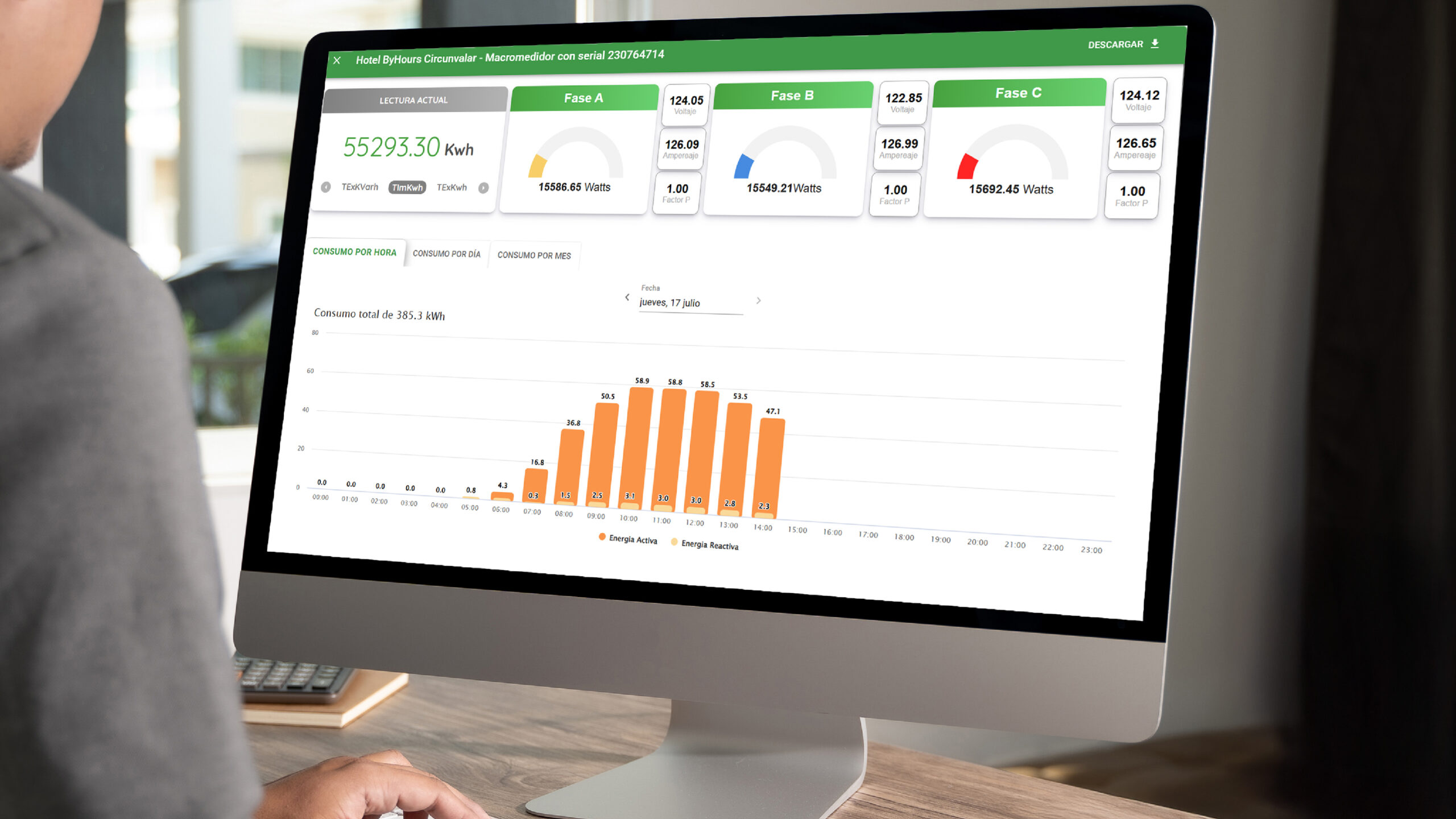Inmotics for hotels, schools and retail: efficiency and intelligent control

Building automation for building automation is already in place
In sectors such as hospitality, education and retail, digital transformation is changing the way buildings operate. The demands of today's users - increased comfort, energy efficiency and sustainability - are driving the adoption of technologies that automate processes and make data-driven decisions.
Building automation is emerging as an integral solution that allows traditional installations to be converted into intelligent environments. Beyond being a technological trend, it is a strategic investment that improves operational performance, reduces costs and contributes to environmental care.
What is building automation and how does it differ from home automation?

Building automation is an advanced automation system for non-residential buildings such as hotels, educational institutions and retail spaces. Unlike home automation, which is oriented to domestic comfort, building automation is designed for environments with high turnover of people and multiple users. Its purpose is to optimize the operation of systems such as:
- Lighting
- Climate control
- Air quality
- Security
- Energy
All this from a centralized platform that offers scalability, remote control and real-time efficiency.
Real applications of building automation
Inmotic systems can be implemented in multiple functional areas. Some common examples include:
- Intelligent climate control: Automatic activation or deactivation of air conditioning according to presence.
- Lighting control: Automatic shutdown of lights in areas with no activity.
- Environmental monitoring: Sensors that constantly measure air quality and energy consumption.
- Unified management: Management of all functions from a single interface, ideal for multiple rooms, halls, classrooms or stores.
This type of automation allows operators to have a global view of the building, anticipate failures and make dynamic adjustments based on usage habits.
Tangible benefits for operators and managers

Implementing building automation not only improves efficiency, but also reduces costs and simplifies operational management. Among its main advantages are the following:
- Energy savings: Lighting and air conditioning automation avoids wasting resources.
- Cost reduction: Reduced equipment wear, less manual maintenance and extended system life.
- Sustainability: Significantly contributes to reducing the building's carbon footprint.
- Greater operational control: Remote management that eliminates unnecessary staff travel.
- Data-driven decisions: Real-time monitoring allows precise adjustments and intelligent reporting.
Frequent problems solved by building automation
Some of the most common operational drawbacks solved by building automation include:
- Equipment that remains on unnecessarily.
- Energy consumption in unoccupied areas.
- Human oversights such as leaving lights or air conditioning on.
- After hours air conditioning.
- Lack of visibility on the building's energy performance.
Thanks to advanced sensors and integrated platforms, all these problems can be anticipated and corrected automatically.
An investment with a guaranteed return
La building automation is no longer optional for those seeking efficiency, control and sustainability. At Horus Automation, we offer customized solutions that adapt to the specific needs of hotels, schools and commercial spaces. Automating your facilities not only allows you to operate more efficiently, but also positions you as a benchmark in innovation and responsible management.

Related posts
- Tags: Space automation, Energy, Inmótica






https://shorturl.fm/LJfYb
https://shorturl.fm/Yt861
https://shorturl.fm/UeJkm
https://shorturl.fm/WcUjn
https://shorturl.fm/8ycai
https://shorturl.fm/eis5W
https://shorturl.fm/JZ8lX
https://shorturl.fm/QfDfj
https://shorturl.fm/ITouK
https://shorturl.fm/2jW2f
https://shorturl.fm/NdTC7
https://shorturl.fm/EZdEd
https://shorturl.fm/3QzDL
https://shorturl.fm/iWBxz
https://shorturl.fm/omQ07
https://shorturl.fm/jOqPT
https://shorturl.fm/SLBZV
https://shorturl.fm/T3cnP
https://shorturl.fm/xVIea
https://shorturl.fm/zrfAt
https://shorturl.fm/vZECJ
https://shorturl.fm/Bh9gV
https://shorturl.fm/AYDTL
https://shorturl.fm/9YOCe
https://shorturl.fm/Gjzxq
https://shorturl.fm/Hx8vO
https://shorturl.fm/KuMvx
https://shorturl.fm/Soa9Z
https://shorturl.fm/16jFa
https://shorturl.fm/HzWVs
https://shorturl.fm/7OCth
https://shorturl.fm/QcBw5
nk0xes
https://shorturl.fm/Jp8sR
https://shorturl.fm/yAzR3
https://shorturl.fm/sSLEe
https://shorturl.fm/cdNvQ
https://shorturl.fm/x07Li
https://shorturl.fm/bIdYN
https://shorturl.fm/ixW5Z
https://shorturl.fm/pnLQY
https://shorturl.fm/HgYAk
https://shorturl.fm/fzrt6
https://shorturl.fm/6oQTs
https://shorturl.fm/NGkrt
https://shorturl.fm/xriva
https://shorturl.fm/EPjPO
https://shorturl.fm/2eXcz
https://shorturl.fm/7C3zt
https://shorturl.fm/Mek0r
https://shorturl.fm/X9PMG
https://shorturl.fm/rRnK8